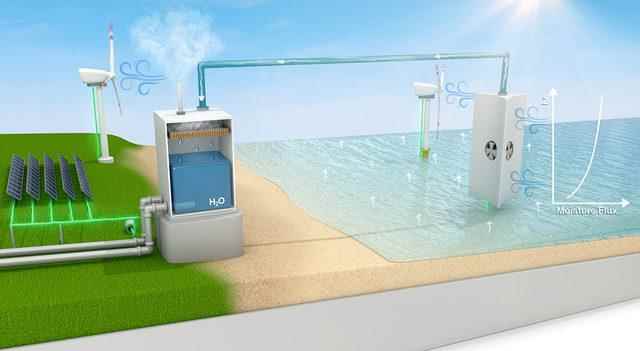According to the news in Science Alert, recycling and limiting the use of water to meet the increasing demand will only take us so far. Scientists will need to find new sources of water, the main source of life, to meet our needs. But scientists may have found a way to obtain an almost unlimited supply of fresh water.
“WE THINK WE CAN DO THIS ON LARGE SCALES”
The new study outlined how catchment structures could be used to convert water vapor above the oceans, a currently untapped but nearly unlimited resource, into drinkable water.
“We think our newly proposed method can do this at large scales,” said Praveen Kumar, a civil and environmental engineer at the University of Illinois Urbana-Champaign, emphasizing that as a result we will need to find a way to increase the freshwater supply.
The researchers designed a structure about 210 meters wide and 100 meters high (roughly the size of a large cruise ship). This structure mimics the natural water cycle in terms of transporting, condensing and collecting water.
Moist air will be transported just above the ocean surface to a nearby shore where cooling systems can convert water vapor to liquid. The team says all of these will be powered by renewable wind or solar power.
Although the researchers did not provide details of their design, they did calculate the figures for collectible moisture at 14 study sites around the world. According to the news, only one of these installations can potentially meet the average daily drinking water needs of approximately 500 thousand people.
“THIS HAS NOT BEEN DONE BEFORE”
“This hasn’t been done before, and I think it’s because researchers are so focused on land-based solutions,” said Francina Dominguez, an atmospheric scientist at the same university. “But our work shows that there are other options.”
“THE IDEA THAT WE PROPOSE WILL BE APPLICABLE UNDER CLIMATE CHANGE”
On the other hand, Afeefa Rahman, a graduate student named in the study, said, “Climate projections show that ocean steam flow will increase over time and provide even more freshwater resources. So, the idea we propose will be applicable under climate change. This is especially true in arid and semi-arid regions of the world. “It provides a much-needed and effective approach to adapting to climate change in vulnerable populations.”
The notable research was published in the scientific journal Scientific Reports.
